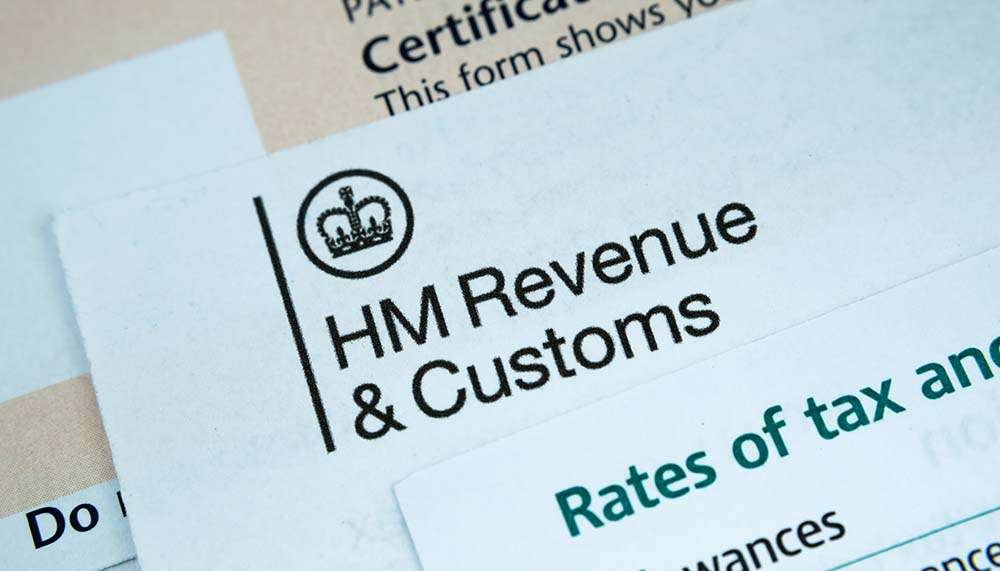What is Emergency Tax?
Back to all Tax and VAT guides

If HMRC doesn't have enough information about how much tax your employees need to pay, it may put them on an emergency tax code. Often the rates paid on an emergency tax code are higher than normal as any tax-free allowances won't be taken into account. This means it's important to ensure HMRC has the correct information to assign and adjust tax codes accordingly. But how do emergency tax codes work, and how can you make sure your employees are not stuck on the wrong code?
When are emergency tax codes used?
There are several situations where someone may end up with an emergency tax code. The most common is when you have a new starter, especially if they can't provide their P45, or someone starts PAYE employment after being self-employed. Other reasons include if a staff member has started or stopped getting benefits from their job, is receiving taxable state benefits, or claiming marriage allowance or expenses that they get tax relief on.
How does emergency tax work?
Emergency tax codes are applied to salaries automatically by HMRC, but only as a temporary measure. Depending on the information available, those on an emergency rate will be charged at the basic rate (20%) or higher rate (40%) of tax on all income that exceeds the personal allowance (currently £12,570), meaning they could miss out on any allowances due.
Employees will be able to find their tax code on their payslip. For most people who have one job or pension, it will be 1257L for the 2021/22 tax year. However, codes 1257 W1, 1257 M1 or 1257 X will indicate they are on an emergency code:
- M1 will be applied if they're paid monthly
- W1 will be used if they're paid weekly,
- And if their pay period is non-standard, there'll be an X.
The numbers in a tax code tell an employer how much tax-free income that person will get in that tax year, while the letters refer to individual situations and how it affects their personal tax allowance.
So, for example, an L means they're entitled to the standard tax-free personal allowance, and OT means either the allowance has been used up, or they've recently started, and you do not have the details to give a tax code.
As you can guess, 1257 refers to the tax-free allowance of £12,570. While this will be correct for most people, it does not consider any backlog of allowance that may be due - for example, if someone has been unemployed for any length of time.
M1 or W1 additions to tax codes also mean that person is on a non-cumulative tax code, where tax will be calculated based on their pay this period, not on overall year-to-date earnings.
Emergency tax and small businesses
As an employer, there are several steps you must take to ensure employees pay the right amount of tax. Firstly, you must tell HMRC when you take on a new employee and be registered as an employer. It's then important that you follow six critical steps before you pay them:
- Check if you need to pay them through PAYE
- Get essential employee information, including date of birth, address, start date and P45
- If they don't have a P45, ensure they complete a starter checklist
- Find out if they need to repay a student loan
- Set up your new employee in your payroll software
- Register your employee with HMRC
By doing all of this, HMRC should have the information needed to ensure tax codes are correct from the start.
How to correct a tax code
If a tax codes is incorrect, the good news is that HMRC will correct it as they gather the information above, and your employee will receive a rebate if they pay too much in the meantime. Once HMRC has all the information it needs, it will send out a PAYE Coding Notice that will list the new tax code that will appear on your employee's next payslip.
If you have a staff member who thinks they're still on an emergency tax code after three months, direct them to HMRC's Income Tax checker within their tax account. Here they can check their tax code or see if it has changed. If it is incorrect, encourage them to contact HMRC as soon as possible. They'll need to have information such as their National Insurance Number, employer tax reference number (which will be on their payslip), and details of their income to hand. HMRC will then check the code and issue a new one if needed.
Being on the wrong tax code for any length of time is likely to be frustrating and concerning for those involved,. Ensuring you submit all the relevant information at the right time so everyone is on the right code from the start is a key way to ensure good morale and make new starters in particular feel like valued members of the team.